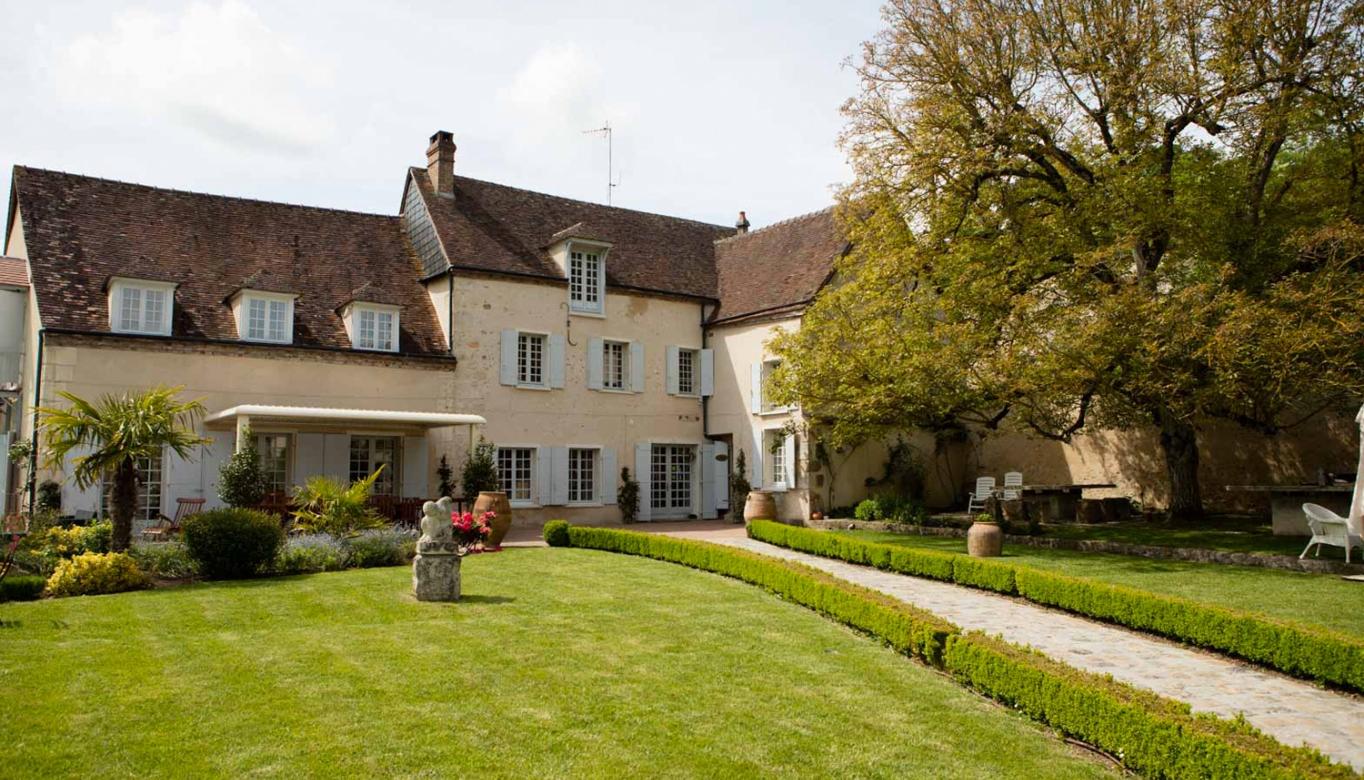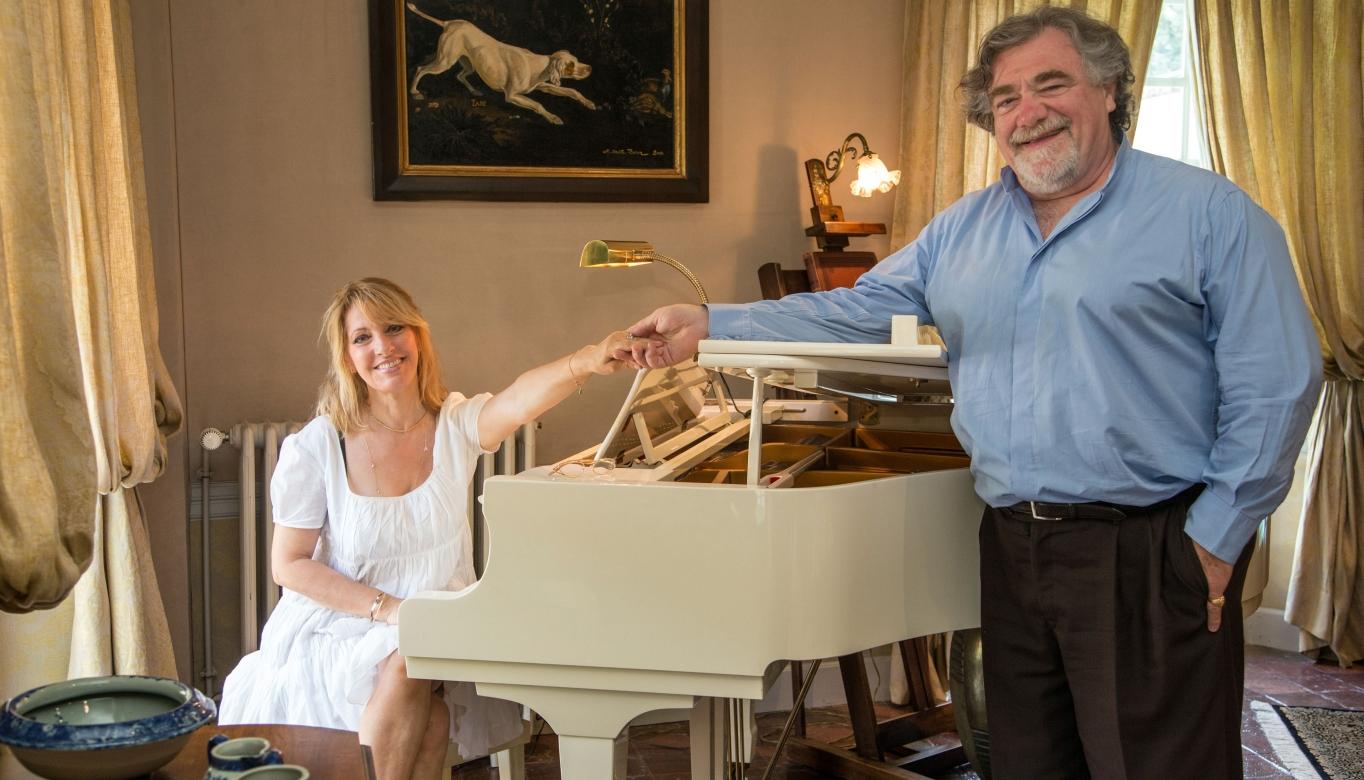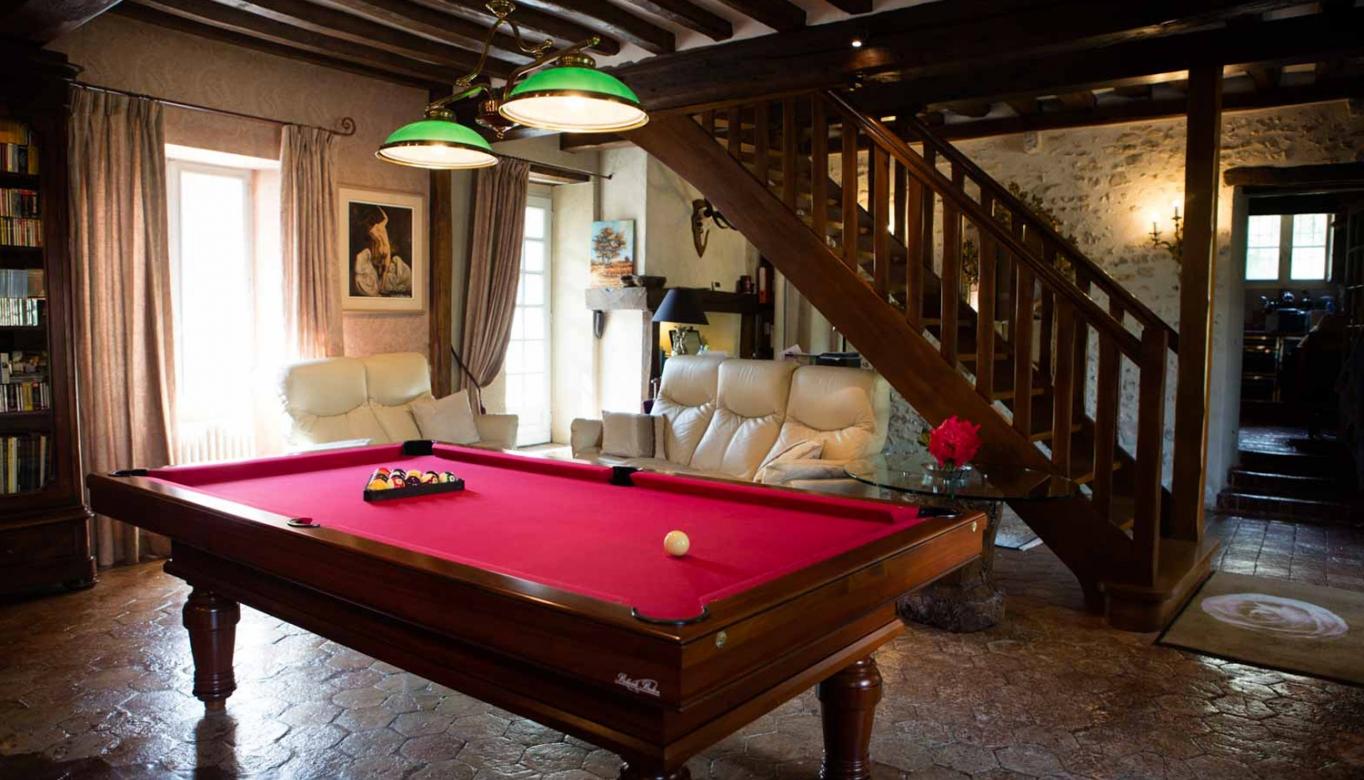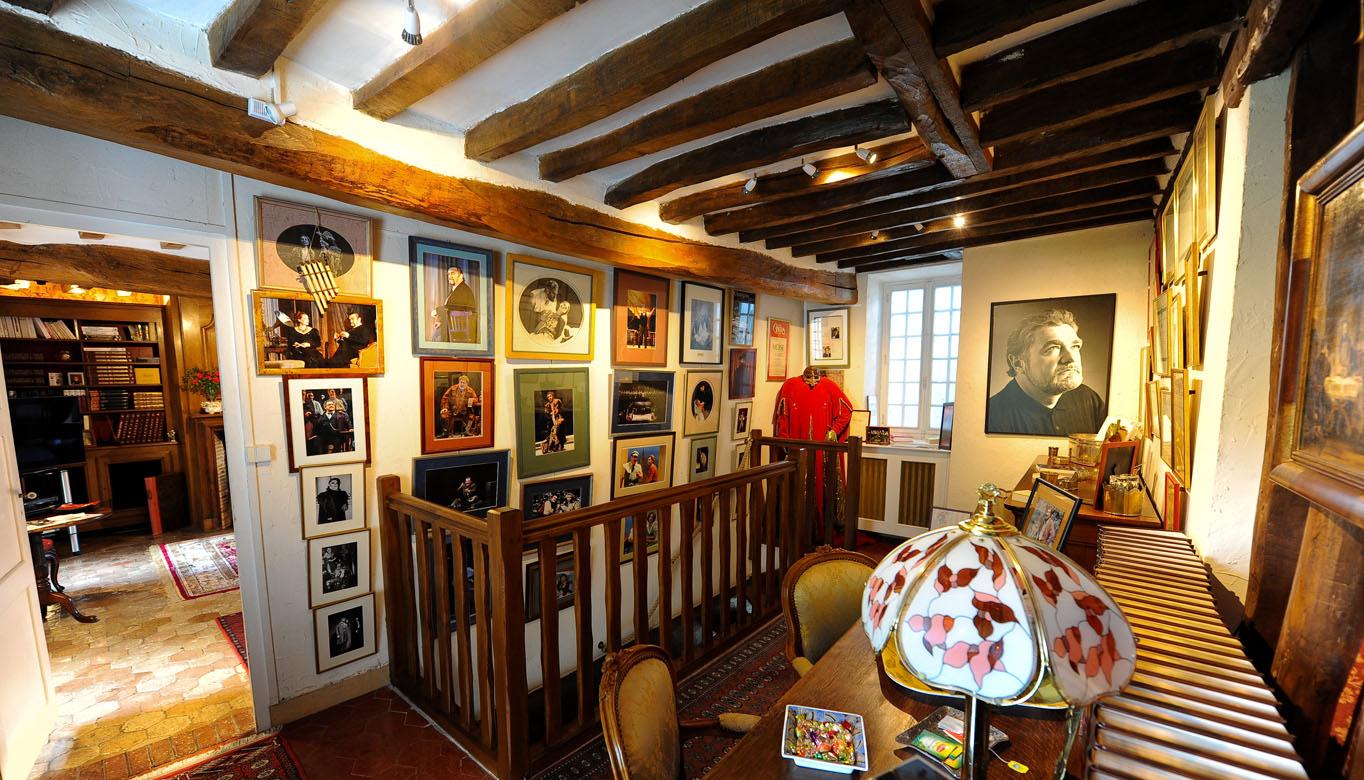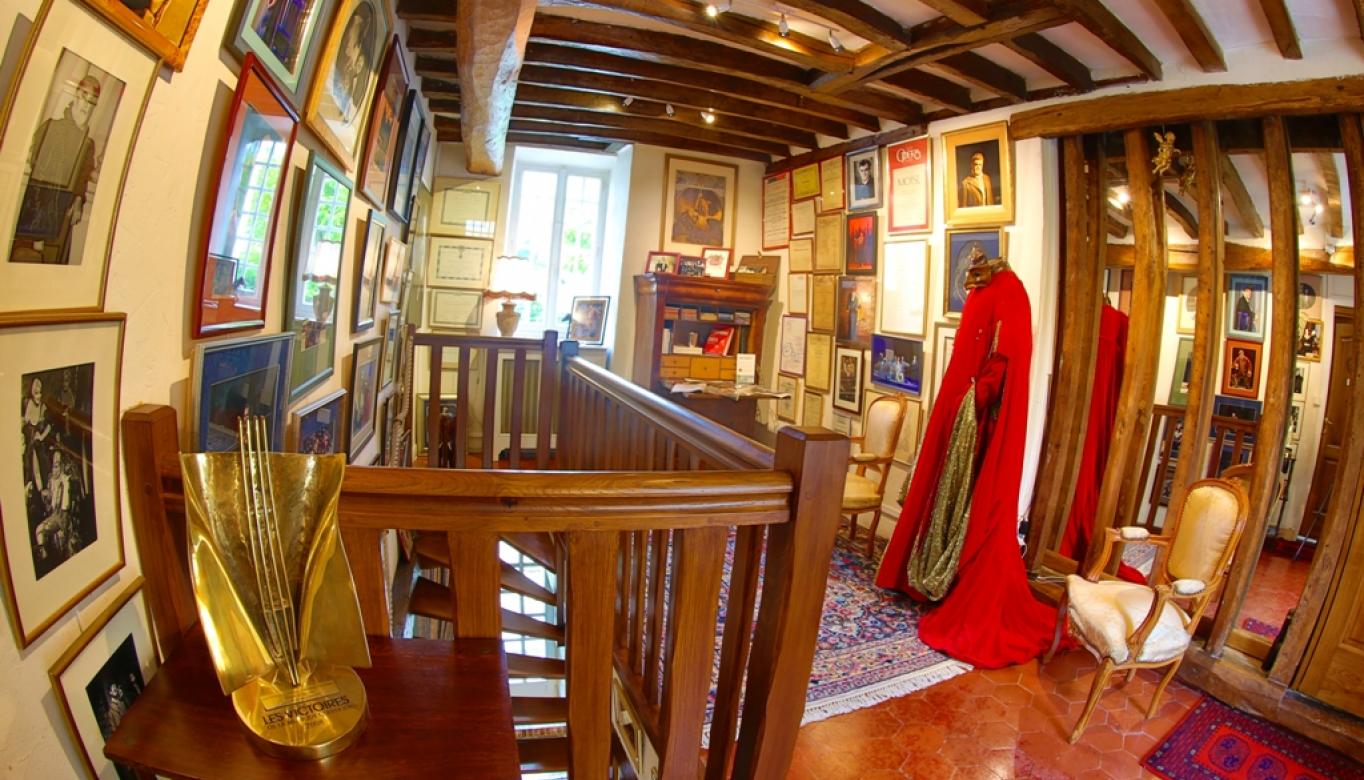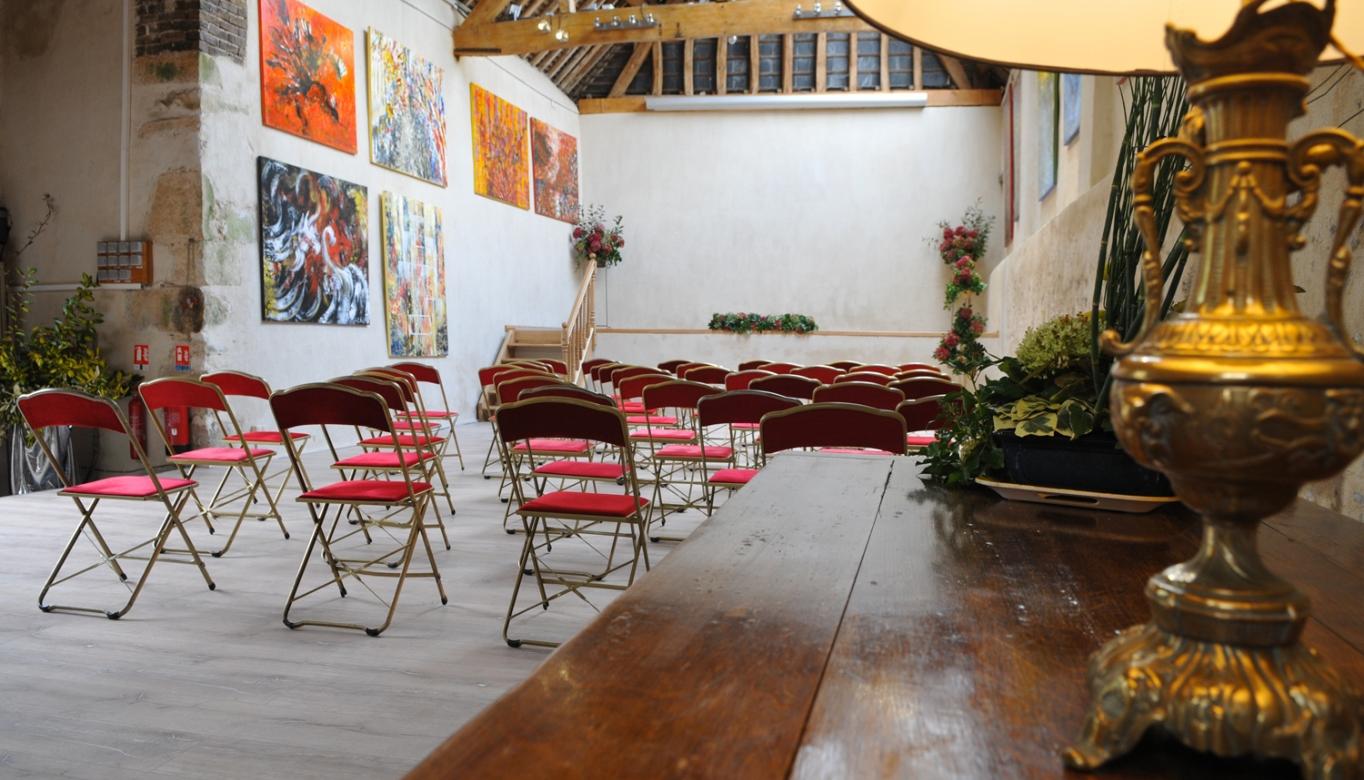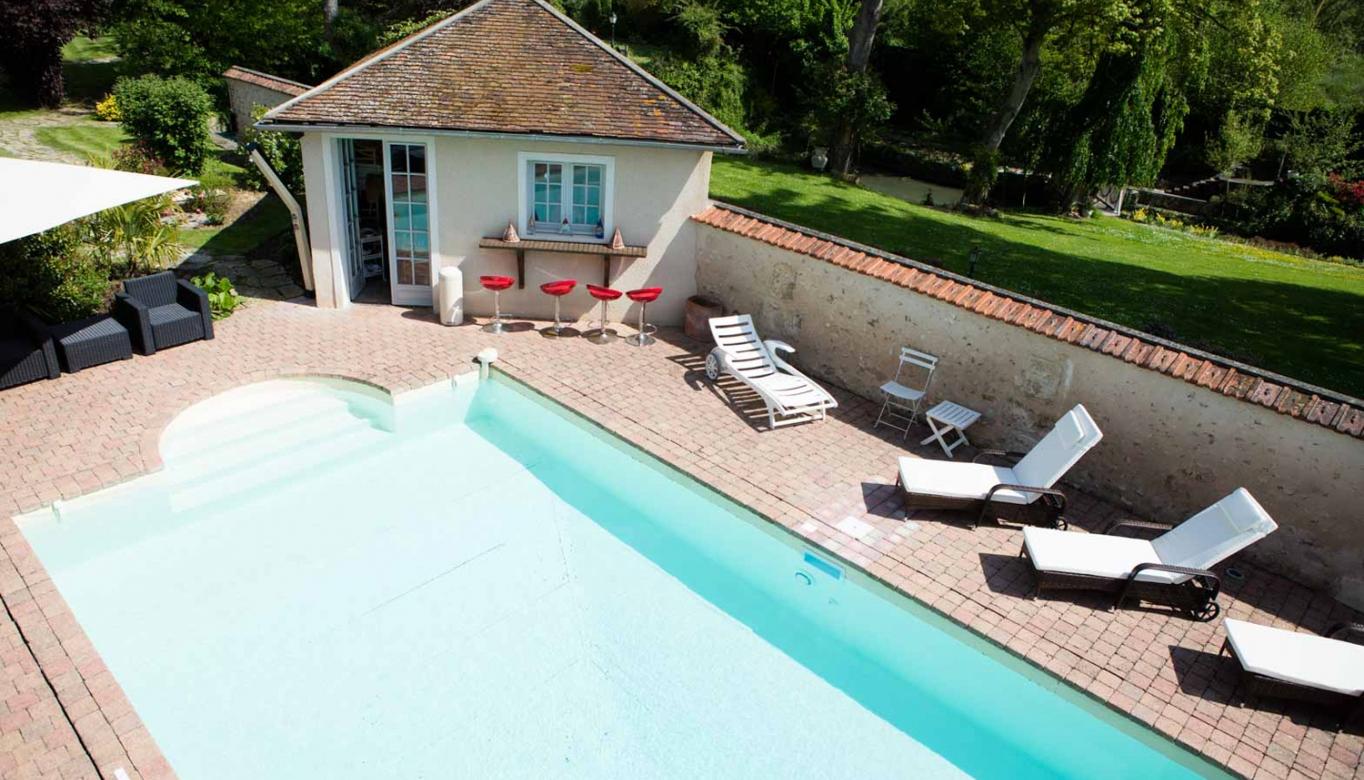The Guesthouse
LA BERGERIE DE L’AQUEDUC' GUEST HOUSE
50 miles south-west of Paris, situated between Chartres and Rambouillet (12 miles) and close to Maintenon castle (3 miles), la Bergerie de l’aqueduc welcomes you to its unique setting 365 days a year.
Classed as a listed building and awarded four golden 'ears of corn' by the travel organisation ‘Gîtes de France’, la Bergerie was once a traditional farmhouse, built at the end of the 17th century by Michel Guiard, adviser and procurer to King Louis XIV. In 1680 Guiard settled into la Bergerie, which, built mostly in stone and in flat tiles, became a one in a million property to own.
For the last 25 years, Martine Lafont (artist and painter) and her husband, Jean-Philippe Lafont (opera singer), have lovingly restored this historic building into the magnificent guesthouse it is today.
For the enjoyment of their guests, Martine and Jean-Philippe have paid particular attention to the finesse of la Bergerie's decoration. Thanks to their care and devotion, la Bergerie has preserved every piece of its authenticity.
This haven of peace is protected by its surrounding walls and is situated in a 3000 m2 park dotted with ancient trees and bordered by the Voise canal, making la Bergerie de l’aqueduc an essential stopping place for rest and relaxation.
This ancient farmhouse’s old granary, with its great carriage gateway, now houses guests’ cars, as well la Bergerie’s bicycles, which guests are welcome to use free of charge for trips into the countryside.
With its beams aged by the years, original floor tiles, beautiful fireplace, and its magnificent billiard table situated in the centre of a traditional 18th century room, the ground floor opens onto a welcoming 60m2 living room with a stunning view of the park and the swimming pool.
The ground floor is also home to a white baby grand piano, a beautiful breakfast table, a home cinema, soft background music and a wood fire...
During the summer season, breakfast is served on the 160m2 outdoor terrace and the outdoor saltwater swimming pool is heated to 30 degrees centigrade.
The main staircase leads up to the first floor where 3 spacious bedrooms can be found, along with their equally spacious bathrooms, encompassing an area of 140m2.
A HOUSE OF HISTORY
This group of 17th and 18th century buildings once bore the name of la Petite Ferme de Houx, the small farm of the local town of Houx, in order to distinguish it from the larger manorial farm based in the area. With its 96 acres of working land and 12 acres of meadow, this is an exceptional property and the second biggest manorial farm in the area.
La Bergerie was built at the end of the 17th century by Michel Guiard, a lawyer and tax attorney for the neighbouring manorial farms. Guiard was then recruited by the Marquis du Louvois, the then French Secretary of State for War, to survey the canal construction works taking place on the river Eure and on the Maintenon viaduct. Through taking on this role, Guiard became the trusted right hand man of politician Joseph Fleuriau d’Armenonville, who employed him first as the bailiff of the town of Rambouillet, and then as the advisor for the King in the region of the duchy of Epernon.
Upon Guiard’s death, the small farm fell to Louis Guiard (1693 – 1762), parliamentary lawyer and lieutenant general to the marquisate prairie of Maintenon. In 1833, the Petite Ferme de Houx was divided up and sold in pieces by Louis Dupont d’Anglesqueville, the last descendant of the Guiard family.
You can download further documents detailing the history of la Bergerie here:
A HOUSE OF ART
After more than a century as the house of servants of the realm, la Bergerie became the house of artists during the 20th century.
In the 1920s, Canadian artist and sculptor, Viola-Gertrude Harvey, made la Bergerie her home after spending many years travelling around the world. She spent the rest of her life in Houx, and, in 1954, the small village became her final resting place.
La Bergerie de l’Aqueduc then became the property of Mrs Stickney Hamilton, an American patron of the arts, who welcomed the great international artistic elite to the farmhouse, including the then famous Kristen Flagstad-Isolde, as well as other political figures from her homeland.
In 1988, Jean-Philippe Lafont, an internationally famous baritone opera singer, purchased la Bergerie from his American friend. With vital help from his wife, painter and artist Martina Della Rocca, they worked together to restore, decorate and beautify the Bergerie to convert this house into the magnificent home it is today.
It is easy to understand that with a history like that of la Bergerie, with all its past artistic influence, a stay in this magnificent building is not just a simple stopping point, but more of a journey of discovery of a world whose past and present are remembered forever by those who discover it. Evidence of this are the many comments left by those who have discovered the joy of visiting la Bergerie de l’aqueduc, which you can read on the ‘temoignages’ page.
VIOLA-GERTRUDE HARVEY
Viola Gertrude HARVEY was born on the 9th June 1875 in St John's, Newfoundland, Canada.
She was the only daughter of Augustus William HARVEY and Elizabeth (Lizzie) HARVEY, née WALKER.
On the 1st August 1875, baby Viola was baptised in St John's Anglican Church: St Mary's Anglican Church Southside.
Viola's childhood still remains a mystery: this green-eyed girl with chestnut brown hair never married. She dedicated her life to her art and to her travels visiting her loved ones in America, and visiting Italy, Bermuda, Canada, and France, where she spent her last of her days.
On the 11th December 1920, then aged 45, Viola arrived in the port of New York. She declared herself to American Immigration services as a resident of Rome, Italy.
On the 15th September 1930, accompanied by her 58-year-old brother Edward Feild, and his wife, 39-year-old Lurlina, Viola returned from Bermuda and resettled in New York. Edward and his wife returned to their home in Gwynedd Valley, Pennsylvania, USA, whilst Viola continued her travels, this time heading for Paris.
Her art: Sculpture.
It appears that Viola had her first success in Paris itself. In fact, in early June 1928, Miss Harvey's sculptures were exhibited in the entrance hall of the Comédie des Champs Elysées theatre (avenue Montaigne, Paris).
We still don't know if Viola lived "the high life" after her success in Paris, but she spent the later years of her life in the countryside. In fact, it was in the quaint village of Houx, situated 12 or so miles from the towns of Chartres and Rambouillet, that Viola spent many a happy day in her home, La Bergerie.
She spent her time there sculpting and, anticipating that the end wasn't far, she even created her tombstone with her own hands.
The 25th September 1954: A young Elvis Presley releases his second single “Good rockin' tonight ", the magnificent Audrey Hepburn marries Mel Ferrer, the Swiss report seeing an AVNI, an unidentified flying weapon...
...And at 11am, Viola Gertrude HARVEY closed her eyes for the last time.
Viola's passing was declared the same day at 6pm by her nephew, Maurice Edward Matheson HARVEY. Given Maurice's presence in Houx, who was at that time residing in London, it is certain that Viola's death was not sudden.
_a_lecole_de_sculpture.jpg) |
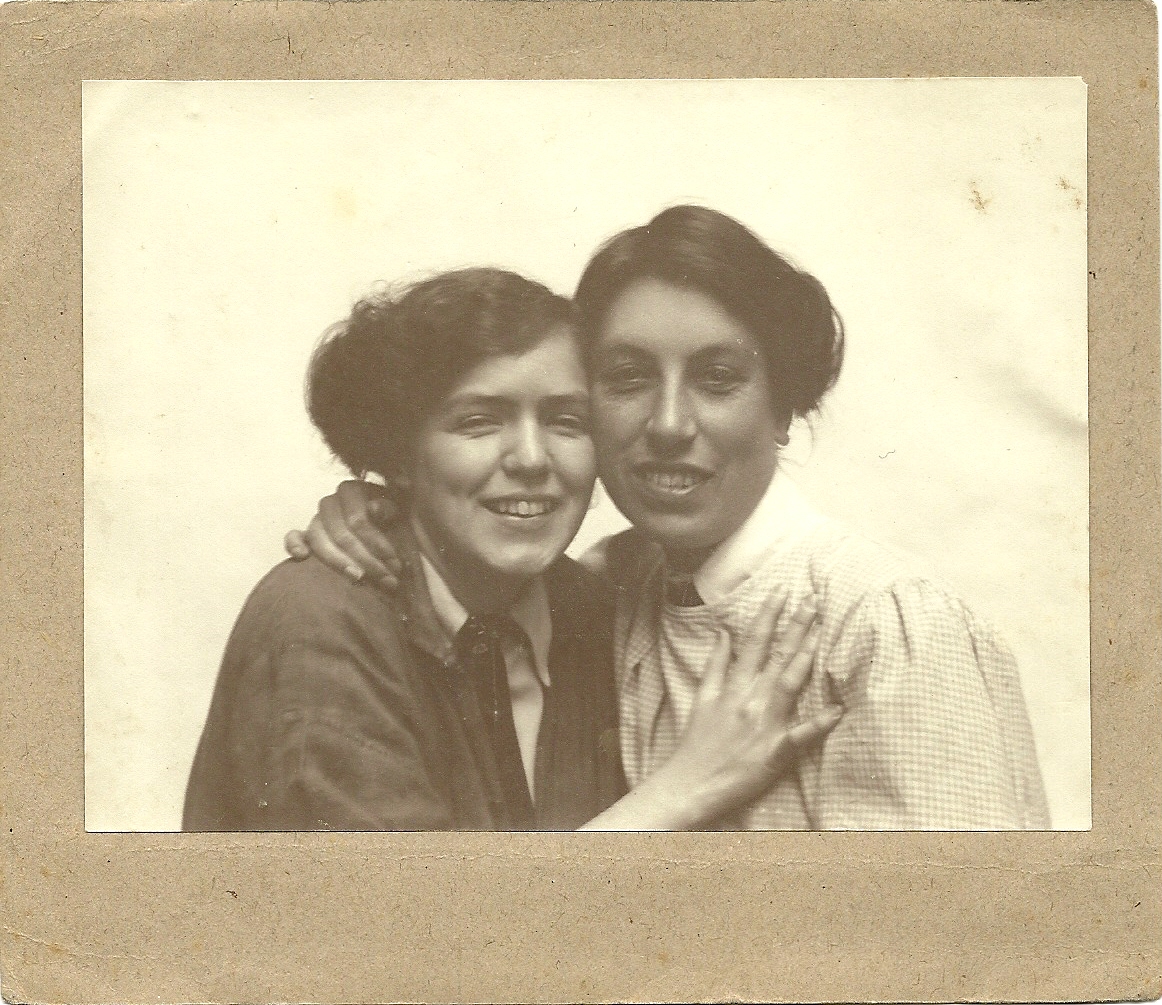 |
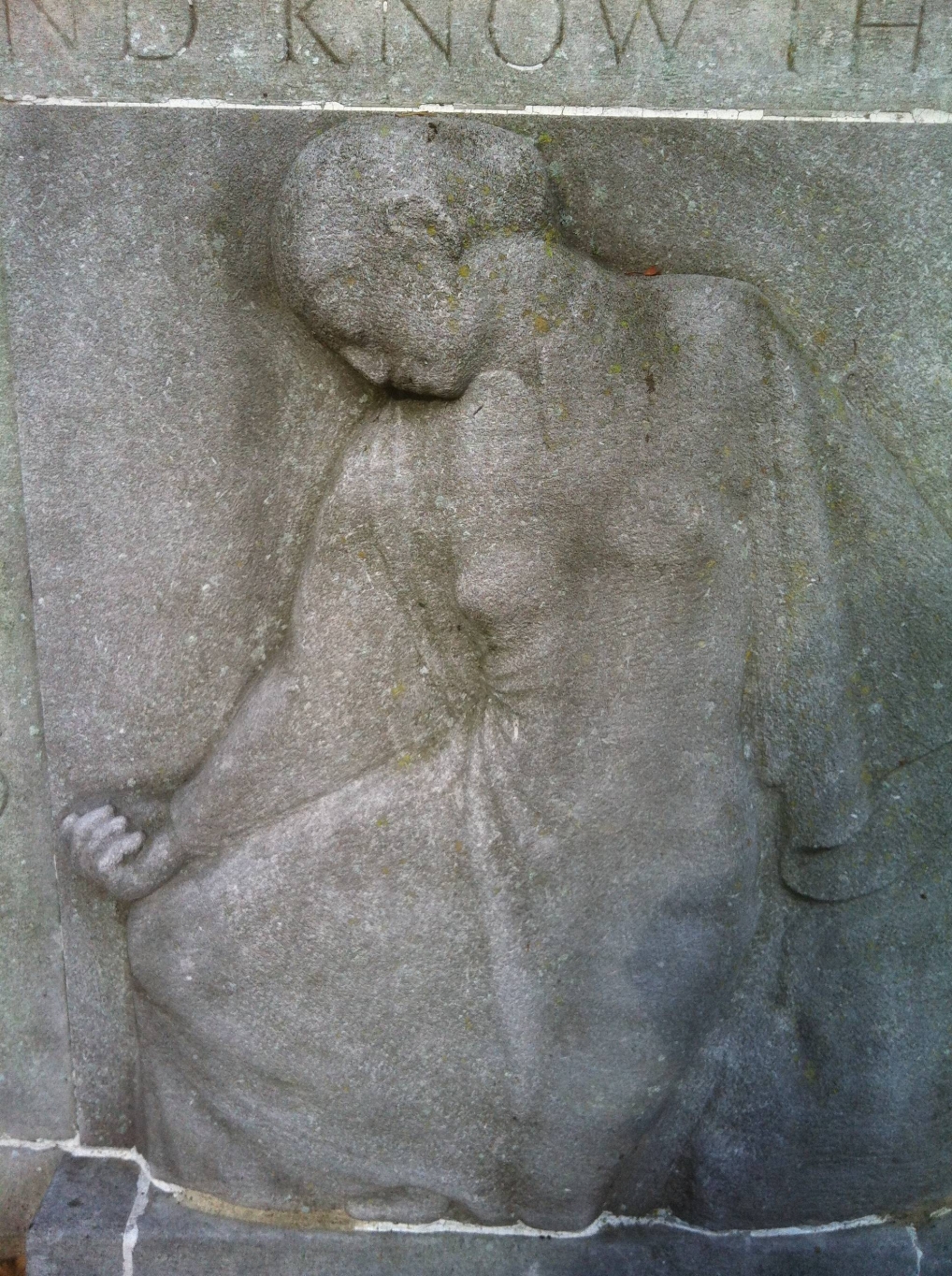 |
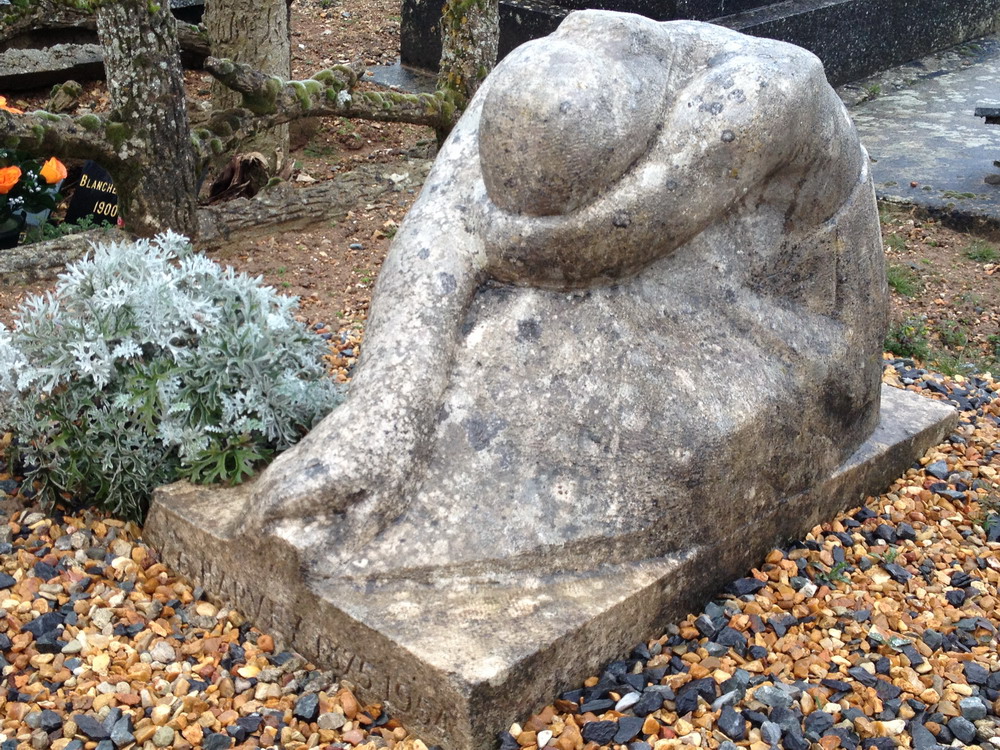 |
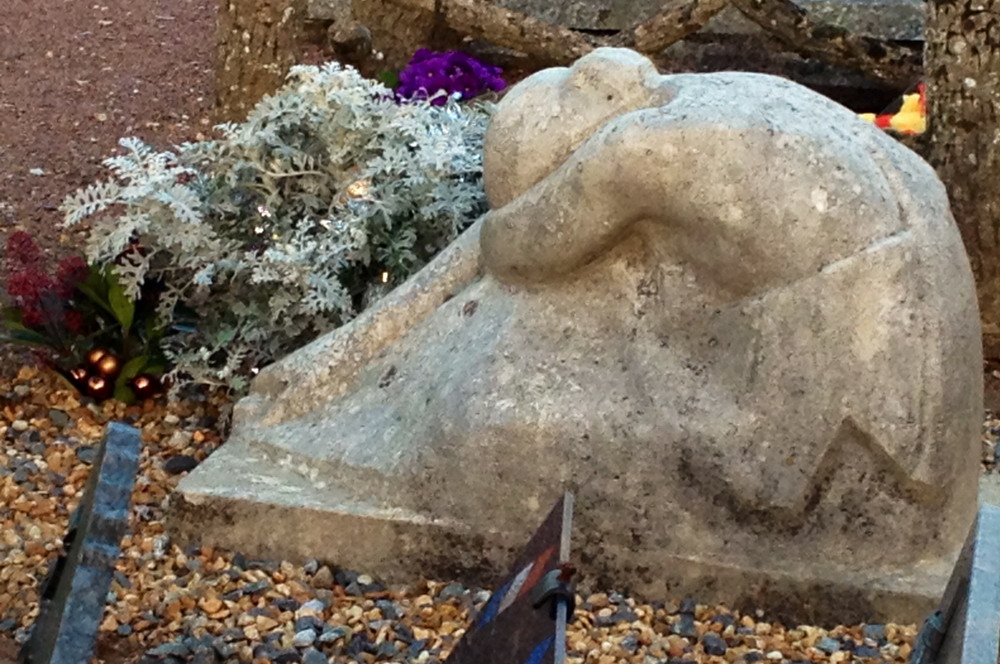 |
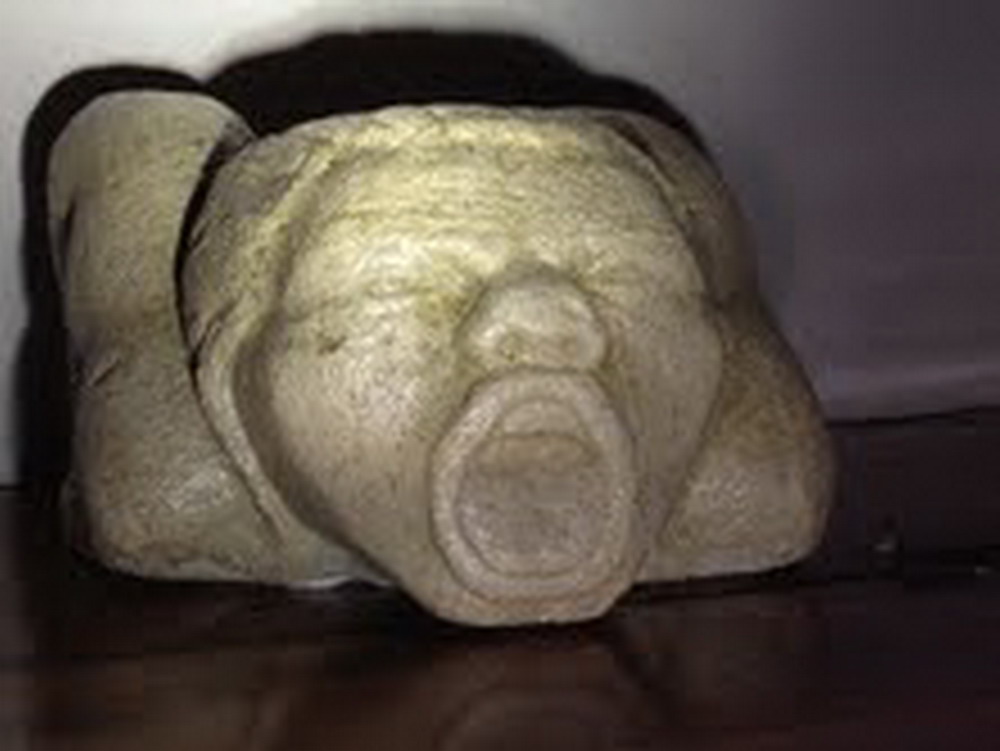 |
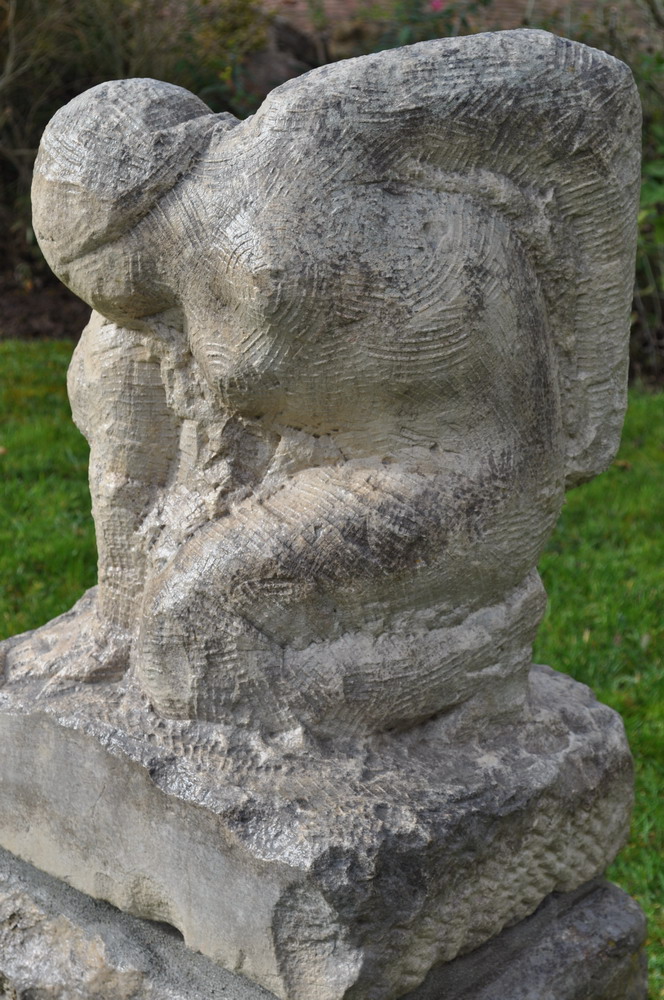 |
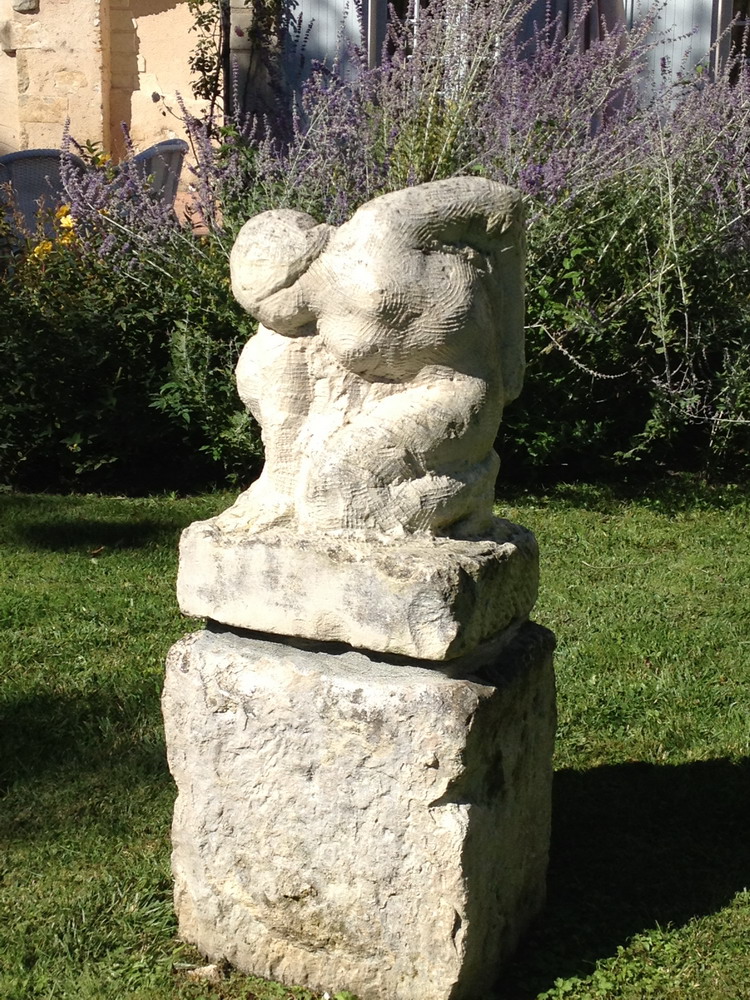 |
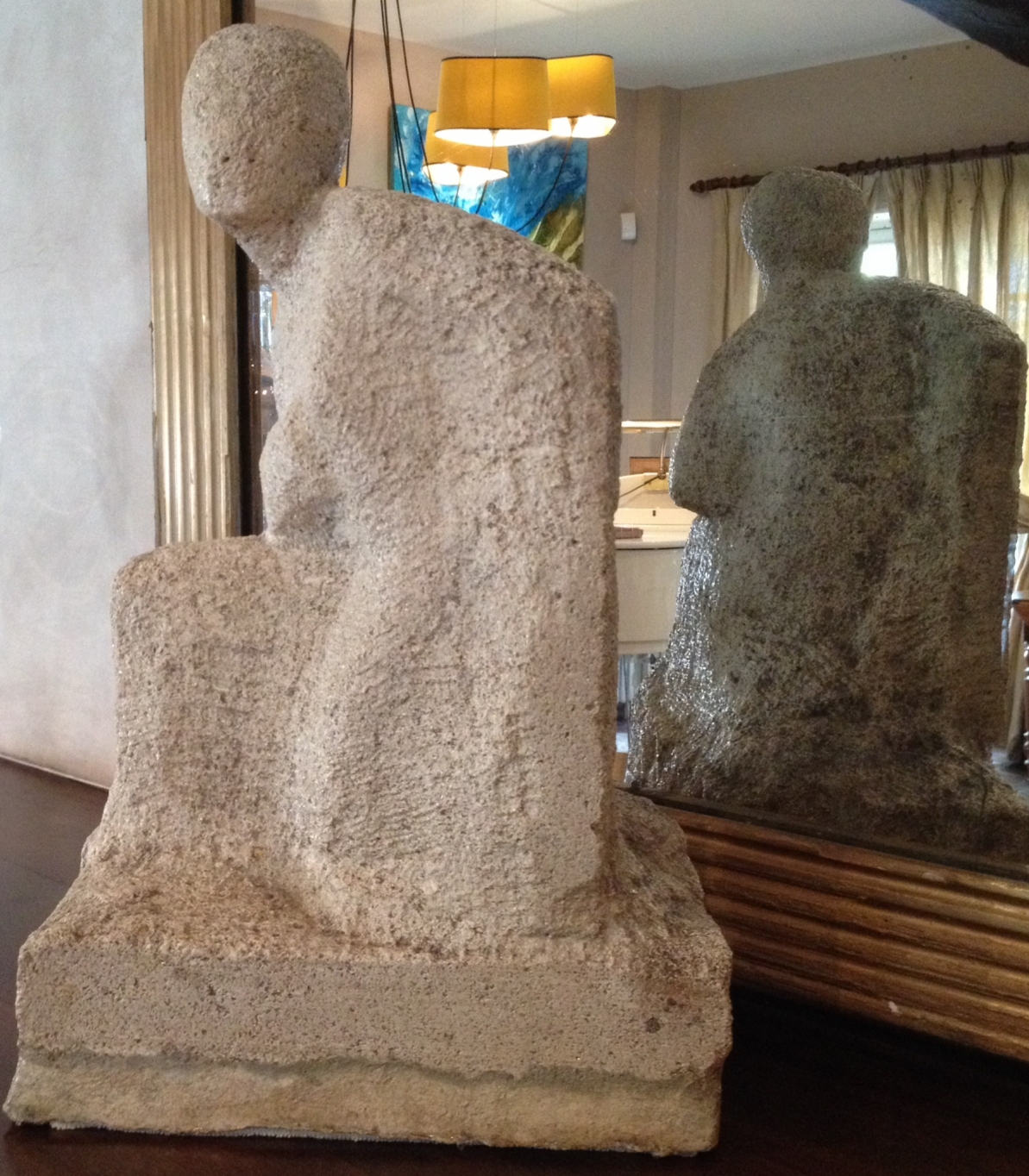 |
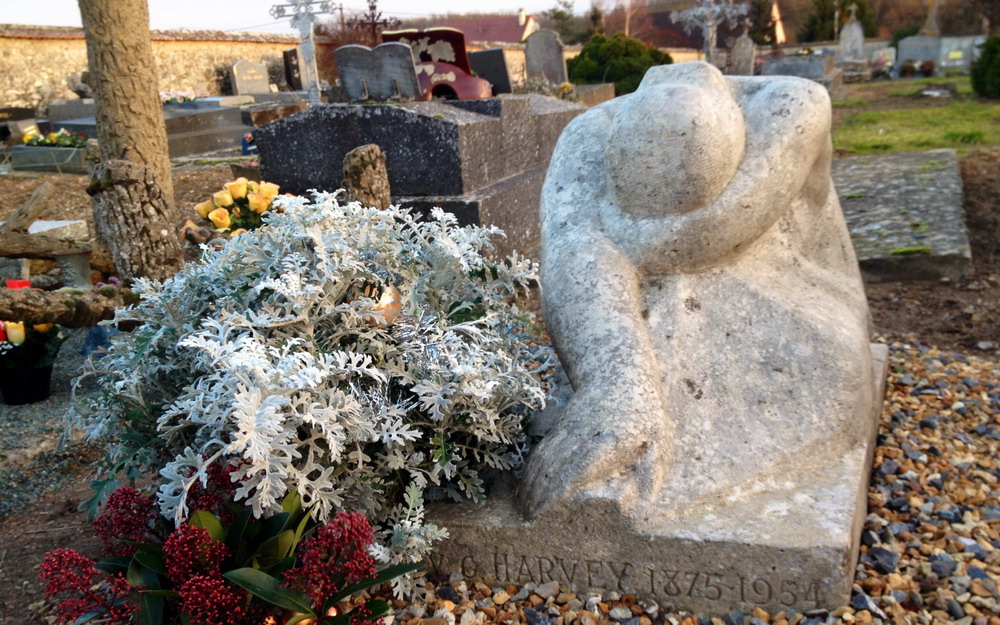 |
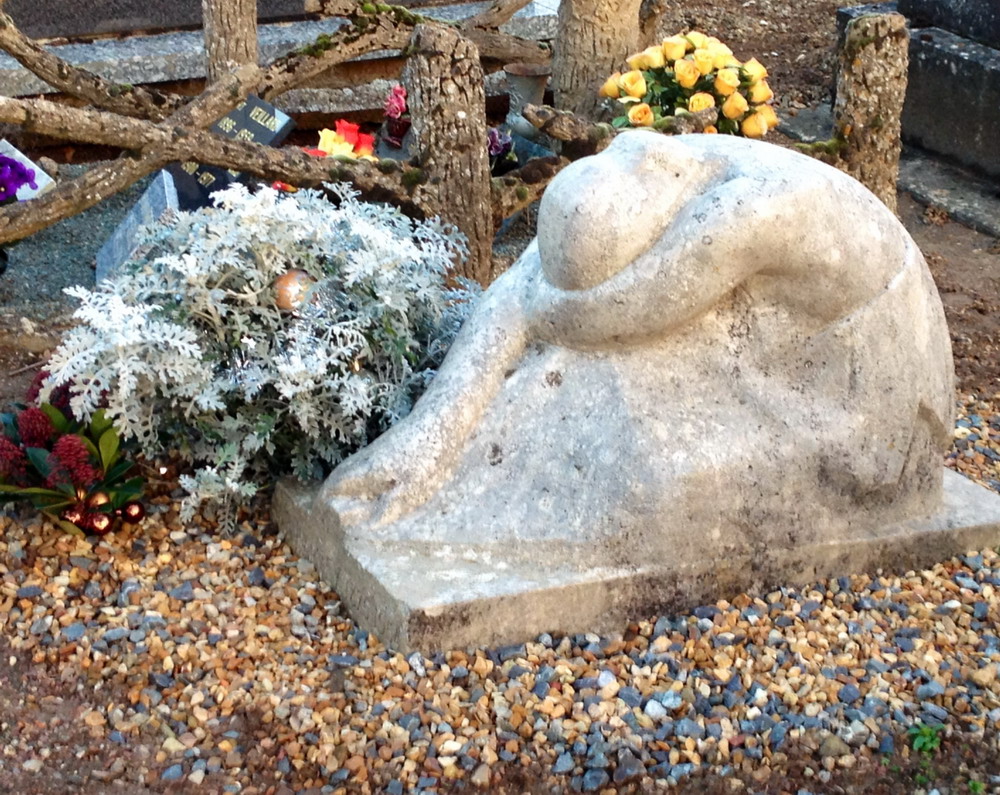 |
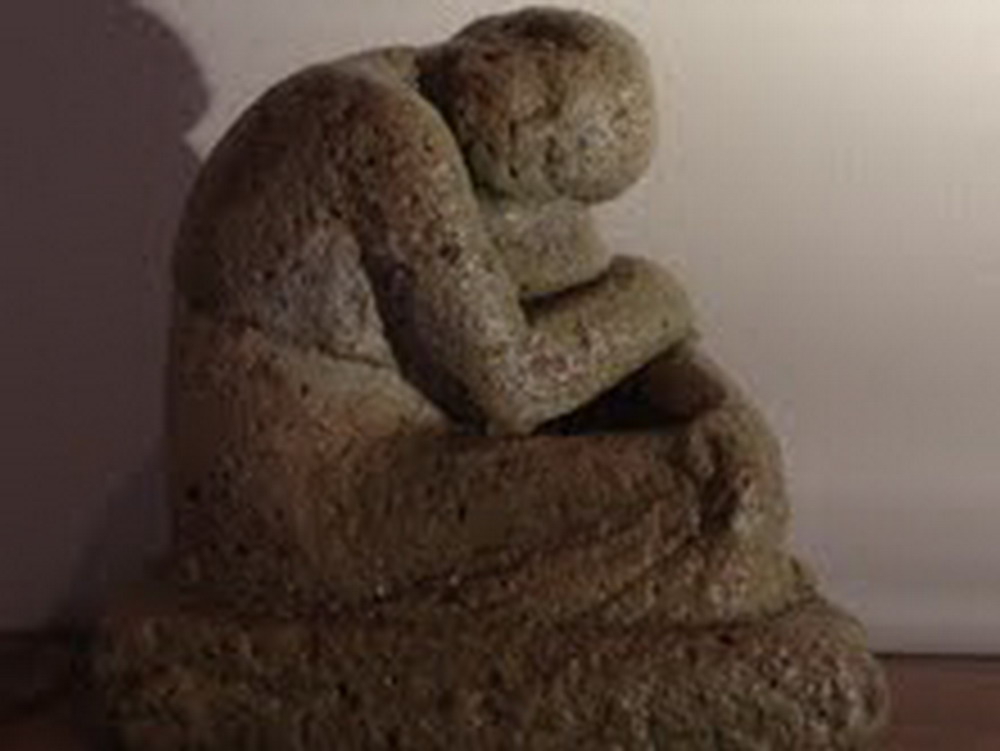 |

 02 37 32 44 04 ou 06 07 68 75 22
02 37 32 44 04 ou 06 07 68 75 22 9 rue de l'Aqueduc - 28130 Houx
9 rue de l'Aqueduc - 28130 Houx




